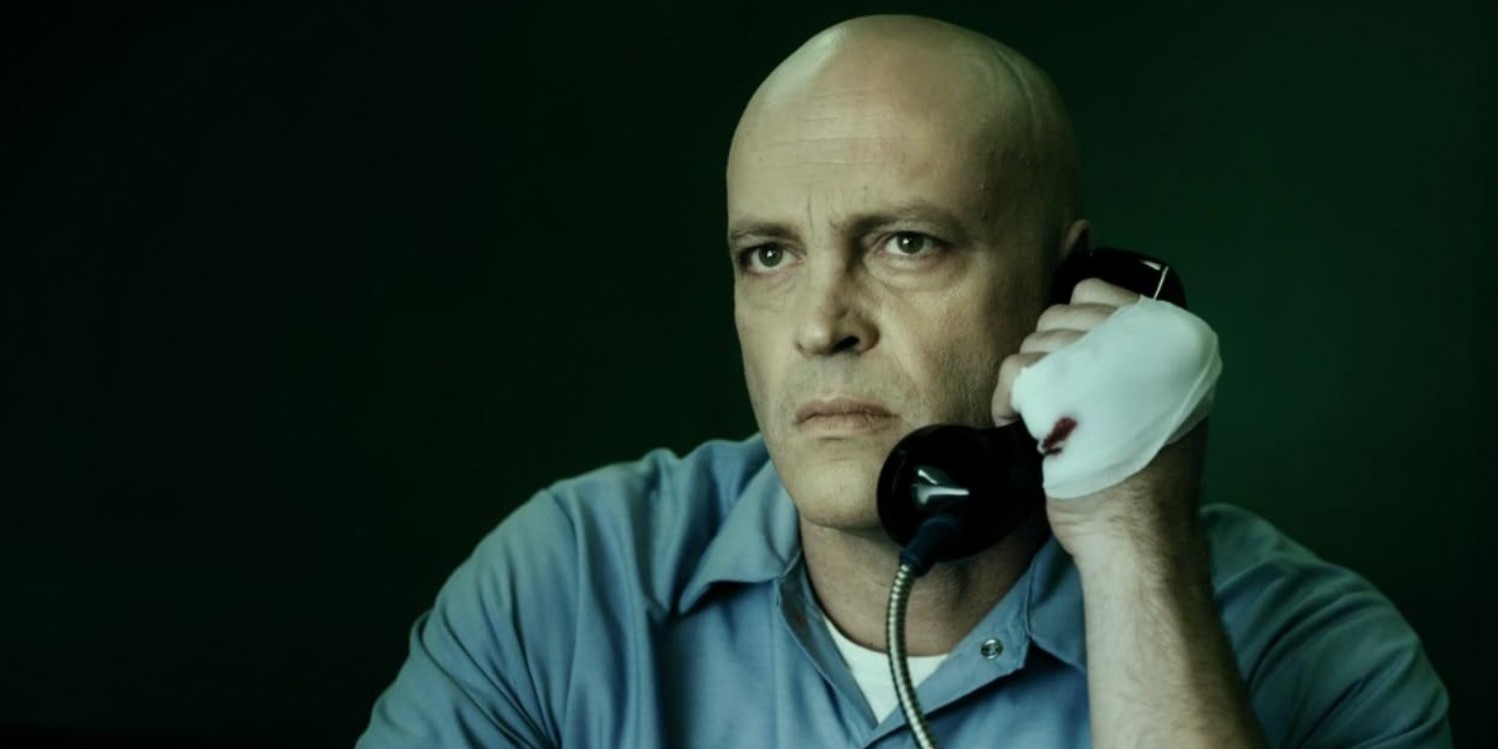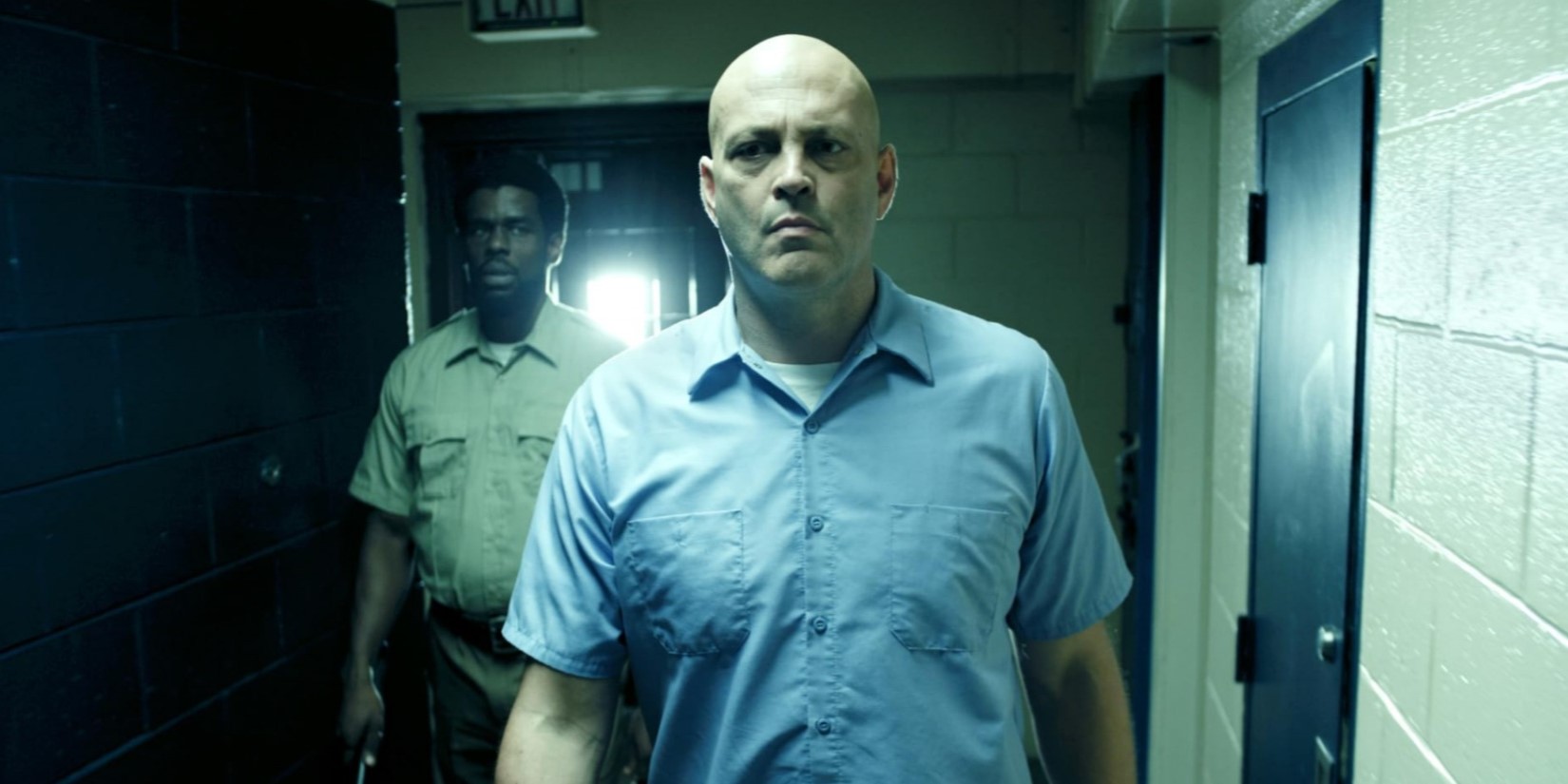‘Brawl in Cell Block 99,’ helmed by S. Craig Zahler, is a brutal neo-noir action thriller introducing us to Bradley Thomas, a former boxer who turns to drug trafficking after losing his job. Bradley is a large reticent man, with an expansive capacity for violence which finds frequent use in his line of work. After a drug deal goes south, he is incarcerated, and blackmailed by a drug lord to carry out an assassination in a maximum-security prison.
The 2017 film is accentuated by its mature look at crime, gratuitous violence, and depiction of prison dynamics. Bradley fights with a deliberate weight to his movements, with action sequences reminiscent of 1970s-style grindhouse flicks. The gritty nature of the movie, along with its multifaceted characters and unique premise, may spark curiosity in some regarding its inspiration, making many wonder whether it is based on a true story.
Brawl in Cell Block 99 is Not Inspired by Real Life
‘Brawl in Cell Block 99’ is a work of fiction created by S. Craig Zahler with the intent of delivering a unique cinematic experience centered around a prison. The director is also responsible for writing the screenplay for the film and began working on it after watching a multitude of prison movies, and asking himself what he would do differently to make a more gripping thriller. He found the setting of a max-security prison to be incredibly compelling, as violent inmates with interesting pasts would be confined together in a pressure cooker situation.

If you get a sense of Déjà vu with the movie’s plot of a boxer in prison, it may be because you have watched ‘Undisputed.’ The 2002 movie sees heavyweight champion George Chambers sent to prison, where he challenges the undefeated Monroe Hutchen to a boxing match. When it comes to a character deliberately going to a specific prison for the sake of his wife, as seen in ‘Brawl in Cell Block 99,’ the narrative of ‘Half Past Dead’ shares some of its elements. The film follows a man going undercover in a penitentiary to gather evidence to prosecute those who killed his wife.
A standout feature of ‘Brawl in Cell Block 99’ is its intense violence, which plays a part in grounding its narrative with the dangerous settings and characters within it. “When I’m writing a moment of physical violence, if it’s supposed to be something really horrific, I’m going to need to keep coming up with ideas until I think it’s gone far enough,” said Zahler. “If it’s supposed to be a character who has been pent up for horrible sequence after horrible sequence and finally they’re letting stuff out, then it really needs to be a lot more than what would come out of a normal person.”
S. Craig Zahler is known for creating scenes of savage aggression in his films. It was the success of his debut film, ‘Bone Tomahawk,’ that green-lit the production of ‘Brawl in Cell Block 99.’ ‘Bone Tomahawk’ transports us to the last days of the Wild West, with the story of an old sheriff and his marshalls rescuing their town’s doctor from cannibalistic cave dwellers. Zahler’s 2018 ‘Dragged Across Concrete’ has a similarly uninhibited character.
To Zahler, his artistic vision and interest are paramount, with no room for messaging or pandering. “It’s not easy to go forth with the attitude of I’m making the movies that I want to see, and that maybe the majority of people who watch movies aren’t going to be interested in what I do,” said the director. “But I’m not chasing the biggest audience. I’m chasing self-satisfaction, and then the opportunity from it to make another one. That’s kind of it! Grown-up movies are those things, and there aren’t tons of them these days.”
‘Brawl in Cell Block 99’ stands as a gritty and intense neo-noir action thriller that dives into the harsh world of Bradley Thomas. While drawing parallels with other prison films like ‘Undisputed’ and ‘Half Past Dead,’ ‘Brawl in Cell Block 99’ distinguishes itself through its unapologetic portrayal of intense violence, a hallmark of Zahler’s filmmaking style. The director, known for his scenes of skull-crunching aggression, prioritizes his artistic vision over catering to mainstream tastes, emphasizing the importance of creative satisfaction in the filmmaking process.
Read More: Is Dragged Across Concrete Based on a True Story?


You must be logged in to post a comment.